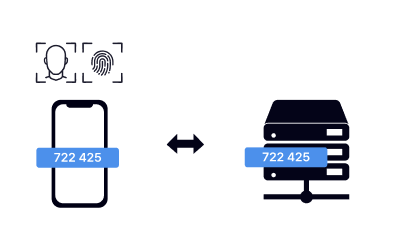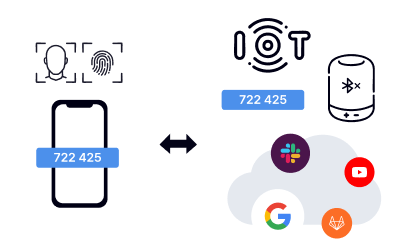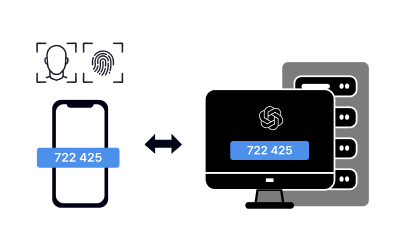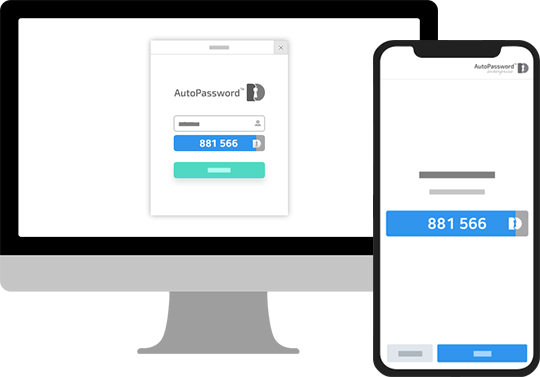AutoPassword is a technology that allows users to log in to online systems without entering a password. Instead, the system presents an auto-generated password to the user, who then approves it using mobile biometric authentication. AutoPassword shifts the responsibility of password verification from the user to the online system, enabling users to access online services conveniently and securely. Additionally, there is no need to install separate biometric sensors for each device—users can perform out-of-band biometric authentication for any online system using the biometric sensor built into their smartphone.
01
Key Features of AutoPassword

Most Cost-Effective Biometric Technology
Conventional biometric technologies, such as FIDO or Passkey, rely on in-band authentication, which requires each user device to have a built-in biometric sensor. While smartphones typically include fingerprint or facial recognition sensors, many desktops and some laptops do not. As a result, using biometrics on a PC often requires purchasing and installing additional hardware sensors.
In contrast, AutoPassword uses out-of-band biometric authentication, allowing users to leverage the biometric sensors already built into their smartphones to authenticate on desktops, laptops, and other devices. This out-of-band approach eliminates the need for additional biometric hardware on PCs or laptops, significantly reducing device deployment costs.

Mobile Mutual Authentication Technology
Conventional mobile authentication technologies verify users by sending push notifications or text messages to their smartphones, which the users then review and approve.
Mobile user authentication methods only verify that the user possesses a “legitimate mobile authenticator” but do not confirm whether the service being accessed is a legitimate system. As a result, if the user connects to a phishing site or a disguised system, they may inadvertently approve the authentication request, leading to potential credential compromise.
In contrast, AutoPassword leverages mobile devices while providing mutual authentication technology that can first verify the system being accessed.

Biometric Authentication Technology Supporting Cloud and IoT
Applying biometric authentication in cloud or IoT environments typically requires the device to have a built-in biometric sensor. However, many cloud and IoT devices lack USB ports or Bluetooth capability to add such sensors, forcing users to revert to passwords in these cases.
AutoPassword overcomes these limitations using out-of-band biometric authentication. On cloud or IoT devices with a screen, the system first presents an auto-generated password, which the user approves via the smartphone’s biometric sensor, enabling secure authentication on the device. This extends the reach of biometric authentication beyond desktops and laptops to cloud and various IoT devices.

Biometric Authentication Technology Supporting AI Agents
As the use of generative AI services, including ChatGPT, expands, it becomes crucial to verify whether the AI service being accessed is legitimate or a disguised one. AutoPassword ensures that users can verify the authenticity of the AI service before using it.
It is also effective when using AI agents. When AI agents perform tasks on behalf of users, they often require access to the user’s password. Providing passwords to AI agents poses a significant security risk.
However, with AutoPassword, when an AI agent requires authentication while performing tasks, the system can present an auto-generated password to the user, who approves it via their smartphone. This eliminates the risks associated with sharing passwords.
Major Implementations









